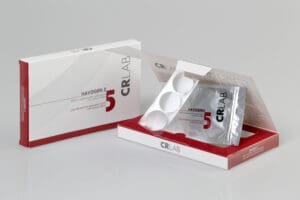
As the winter comes to an end and the spring months fast approach, so too does seasonal hair shedding. Seeing more hairs than usual on your hairbrush, on the bathroom floor, or in the shower can leave the average man or woman in a bit of a panic. Is this kind of hair loss typical? Should you be concerned?
We shed an average of 80 to 100 hairs every day. This is considered normal, healthy hair shedding. These hairs that are shed are not lost. Instead, they are going through a cycle of growth, transition, and then rest, when hairs release and are shed, before the process repeats. During certain times of the year, you may notice an increase in shedding, especially in the late fall months. This common phenomenon is known as seasonal shedding.
The exact cause of seasonal shedding is unclear, but studies show that seasonal loss affects more women than men and occurs most often during the spring months, like April and May, and sometimes in the fall, September and October.
If you have been properly maintaining your hair and scalp, seasonal shedding usually is not a cause for concern. With time, shedding should stabilize back to normal daily levels, and average hair growth will continue. However, if you have not been correctly caring for your hair and scalp’s specific needs, you could be experiencing symptoms similar to seasonal shedding, which can lead to long-term hair loss.
Seasonal Shedding or Something More?
When the body consistently sheds significantly more than 80 to 100 hairs daily, a person has excessive hair shedding, which several factors can cause. These factors include increased or constant levels of stress, medications you may be taking, internal factors like hormones (menopause and pregnancy), and thyroid function, or improperly caring for your hair and scalp. In some cases, hair can recover and return to its normal growth cycle. In other cases, hair can begin to diffuse, growing in thinner, or become dormant. Excessive hair shedding itself can be very stressful, and while it usually is temporary, if not correctly detected and treated, it can create a perpetual cycle of hair loss.
Prevent With ScalpCheck
Instead of self-diagnosing whether your hair shedding is seasonal or something more, consider visiting our center for our exclusive ScalpCheck, gives you an in-depth analysis designed to help determine the health of your hair and scalp. This allows us to customize a hair and scalp care protocol based on your specific needs. Ultimately, reducing or preventing hair and scalp problems before they start and helping you maintain beautiful, healthy hair and scalp for years to come.
A Part of Your Solution
As a part of your solution for both seasonal shedding and excessive hair, shedding may be the Havogen 5 patch by CR Labs. This transdermal, non-medical patch is clear, water-resistant, and designed to be worn for 12 hours each day to allow for the gradual absorption of the active, natural ingredients. Through this particular combination of the vitamins, antioxidants, amino acids, and plant extracts, along with the slow-release technology’s unique mechanism, the Havogen 5 patch can slow or stop hair loss and reduce the excess of oil – ultimately fighting the problem of hair loss at the root.
 5 Benefits of Havogen Patch
5 Benefits of Havogen Patch
- Reduces oil and inhibits the production of DHT (cause of hair loss)
- Provides antioxidants to help eliminate toxins at the root
- A blend of vitamins helps reinforce and stimulate hair growth
- Proteins strengthen and protect the structure of the hair shaft
- Create a better overall attachment experience due to less smell, itch, and premature slip.
Get on the road to healthier scalp and hair
Hair shedding is coming. Now is a perfect time to schedule a ScalpCheck to discover your hair and scalp’s health and be sure seasonal shedding isn’t masking a longer-term hair loss problem.


 5 Benefits of Havogen Patch
5 Benefits of Havogen Patch